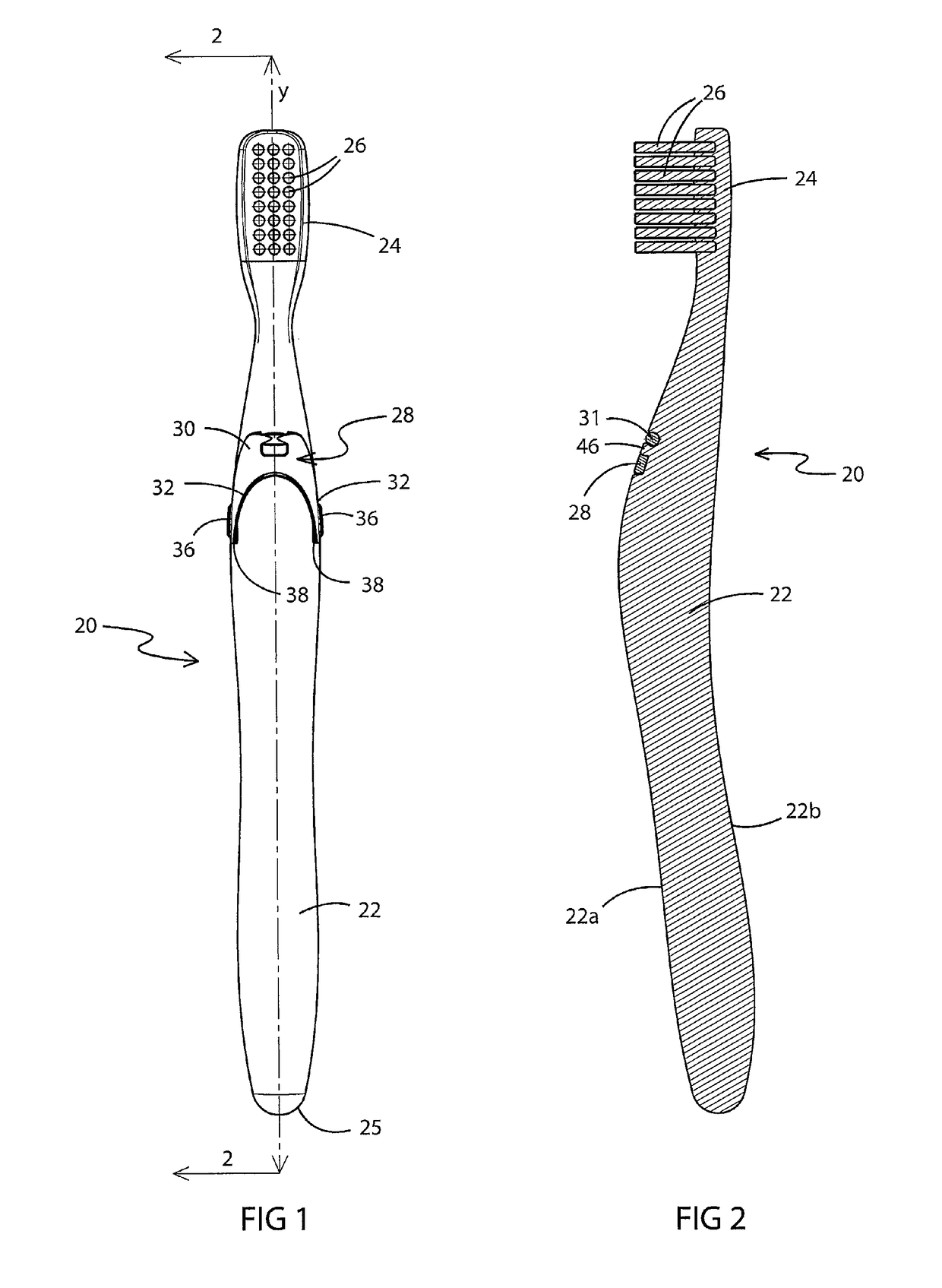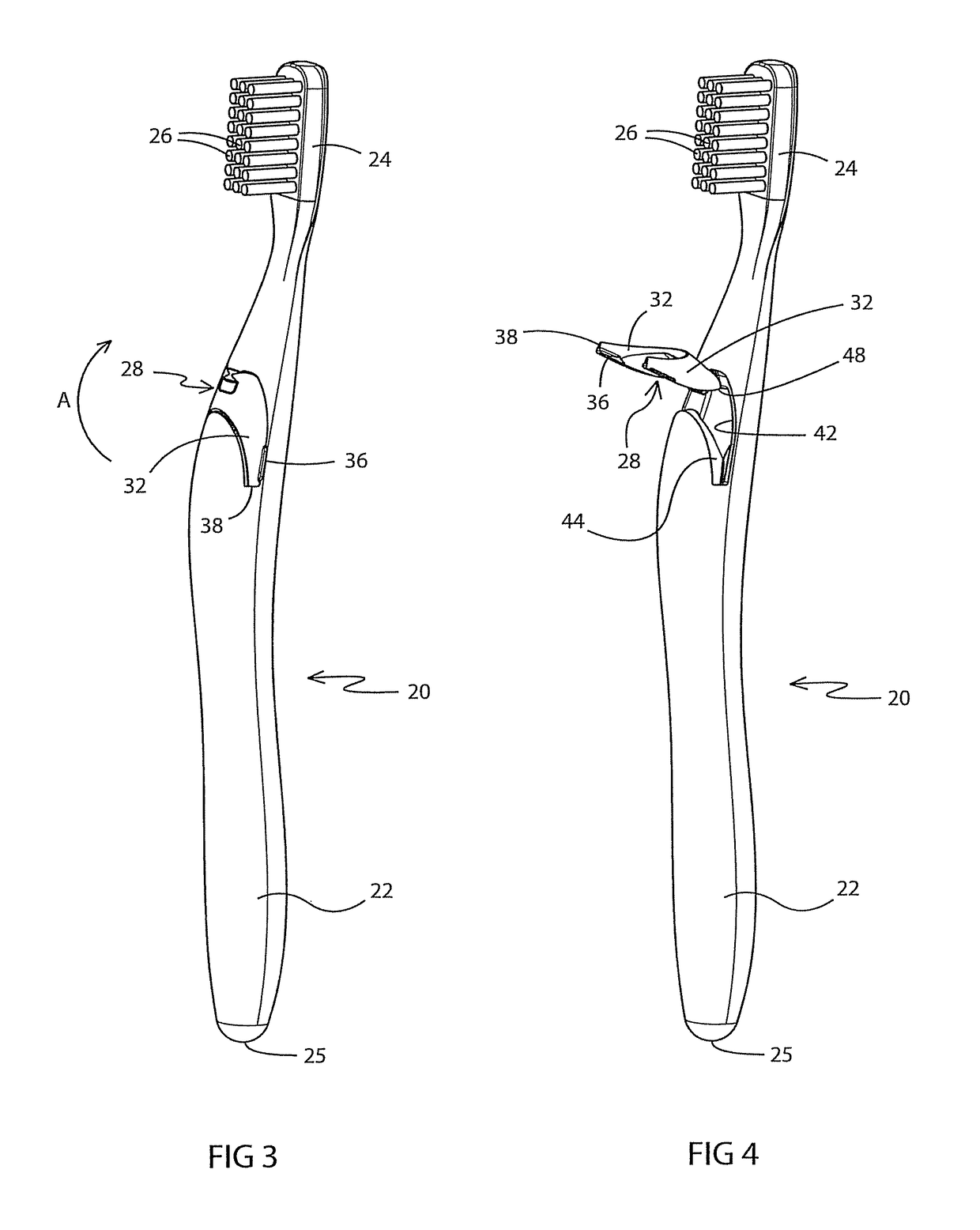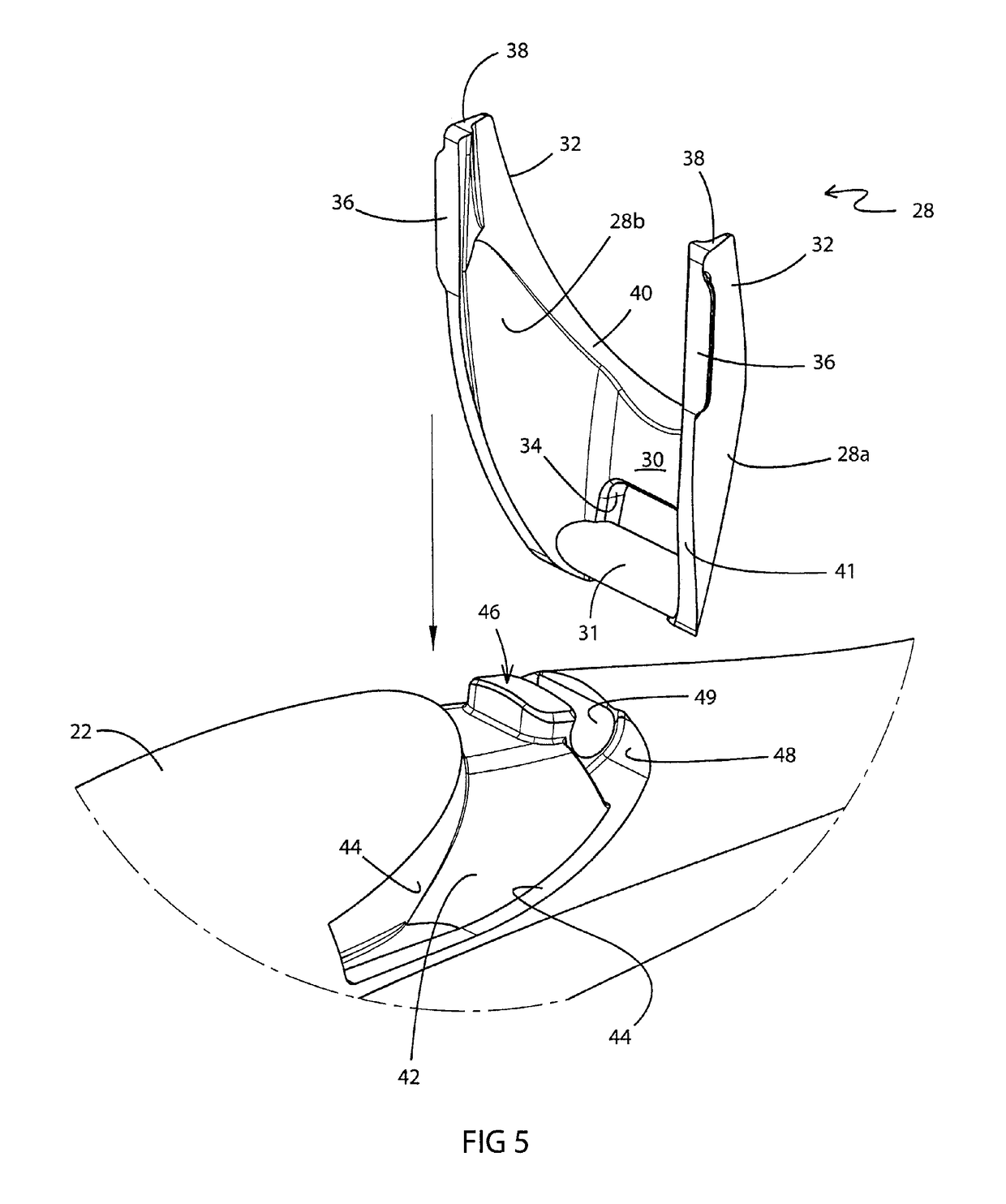Self-supporting manual toothbrush
a self-supporting, toothbrush technology, applied in the field of dental care, can solve the problems of large size, inability to insert through the aperture, and large size of the handle, and achieve the effect of reducing the comfort of cleaning, and reducing the difficulty of cleaning
- Summary
- Abstract
- Description
- Claims
- Application Information
AI Technical Summary
Benefits of technology
Problems solved by technology
Method used
Image
Examples
second embodiment
[0044]In accordance with a specific feature of the second embodiment, stand 128 further includes a longitudinally aligned lever 154 that extends outwardly away from rod 131 and in the opposite direction to legs 132. When stand 128 is secured to handle 122, lever 154 is introduced into recess 142 and into cavity 152. Proximate rear wall 122b of handle 122, cavity narrows to forms slot 150. Lever 154 is sized so that at least the terminal end 154a thereof is received in slot 150. When stand 128 is in the collapsed position (FIGS. 10, 11&15), legs 132 of stand 128 extend downwardly toward bottom end 125 of handle 122 and terminal end 154a of lever 154 extends upwardly toward head 124 of brush 120. Terminal end 154a abuts end 150a of slot 150. When stand 128 is in this collapsed position, terminal end 154a preferably does not extend outwardly from rear wall 122b of brush 120 as is shown in FIG. 11. When stand 128 is in the extended position (FIGS. 13, 14, 16), legs 132 of stand 128 exte...
first embodiment
[0046]When stand 128 is in the extended position, toothbrush 120 can be rested on surface S by placing ends 138 of stand 128 and end 125 of brush onto surface S. As with the first embodiment, toothbrush 120 thereby is angled on surface S in a manner that head 124 and bristles 126 are kept a distance above the surface so that they may drip-dry.
[0047]It will be understood that while stand 28 is shown as having two terminal ends 38, stand 28 may alternatively be shaped so that only one terminal end will contact surface S when stand 28 is in the extended position.
[0048]It will be understood that while the stand 28 is shown pivotally mounted to the front wall 22a of handle 22, the stand may, alternatively, be mounted to a side wall or to rear wall 22b in such a location that when stand 28 is in the extended position, terminal ends 38 thereof contact surface S and retain head 24 and bristles 26 a spaced distance away therefrom. Obviously, if stand 28 is mounted to a side wall, head 24 and...
PUM
 Login to View More
Login to View More Abstract
Description
Claims
Application Information
 Login to View More
Login to View More - R&D
- Intellectual Property
- Life Sciences
- Materials
- Tech Scout
- Unparalleled Data Quality
- Higher Quality Content
- 60% Fewer Hallucinations
Browse by: Latest US Patents, China's latest patents, Technical Efficacy Thesaurus, Application Domain, Technology Topic, Popular Technical Reports.
© 2025 PatSnap. All rights reserved.Legal|Privacy policy|Modern Slavery Act Transparency Statement|Sitemap|About US| Contact US: help@patsnap.com



